Ever dreamed of flying? The world’s fastest zipwire, Velocity 2 in North Wales, has you soaring through the sky at 100 mph!
Read more about incredible rides in WHIZZ POP BANG: PLAYGROUND SCIENCE – it’s on sale now!
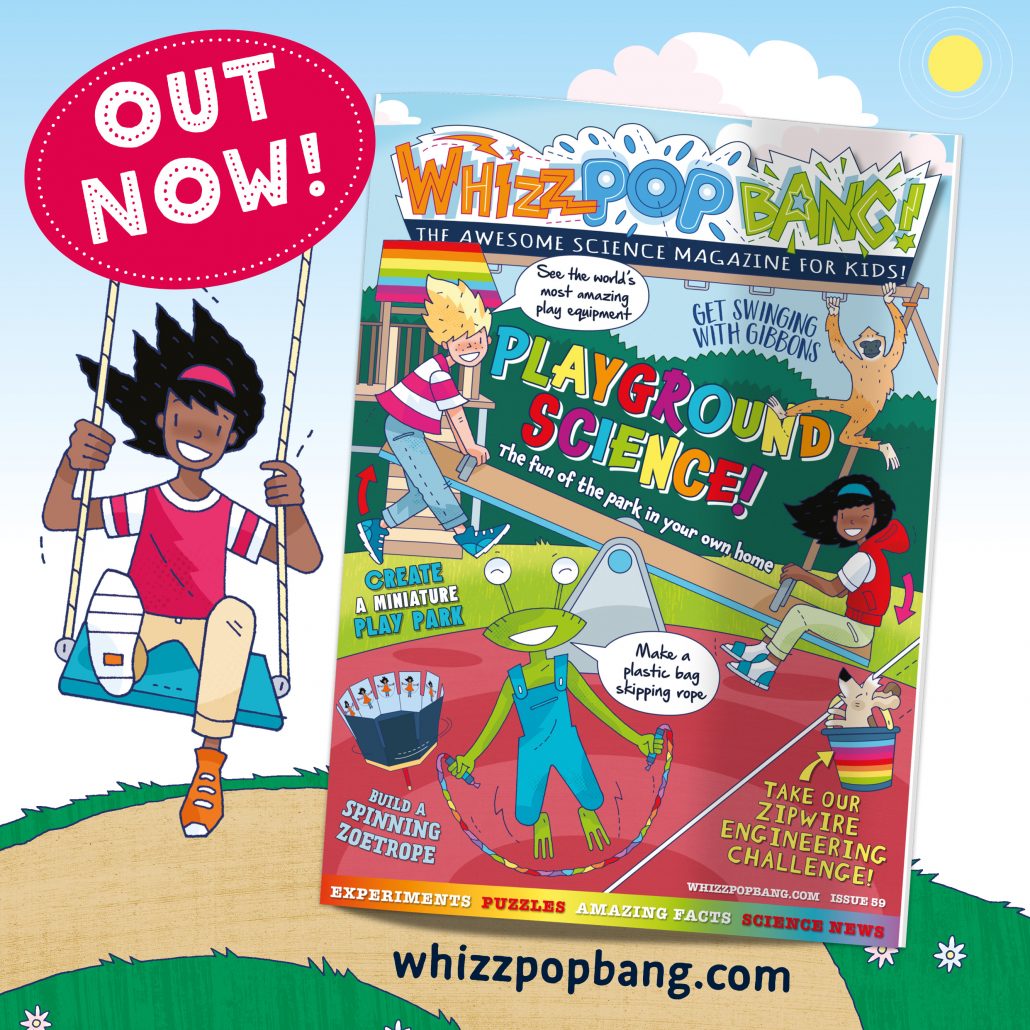
Ever dreamed of flying? The world’s fastest zipwire, Velocity 2 in North Wales, has you soaring through the sky at 100 mph!
Read more about incredible rides in WHIZZ POP BANG: PLAYGROUND SCIENCE – it’s on sale now!

Virtual reality allows users to see a virtual world, but a new technology could allow them to feel it too. The device, developed by American scientists, uses multiple strings attached to the hand and fingers to simulate the feel of touching objects. You could even high five a virtual character!
The strings are attached to spring-loaded retractors, like those used in key chains, in a lightweight device worn on the shoulder.
Watch the device in action here:
Read the latest science news in every issue of Whizz Pop Bang magazine. This story is in PLAYGROUND SCIENCE, on sale now!

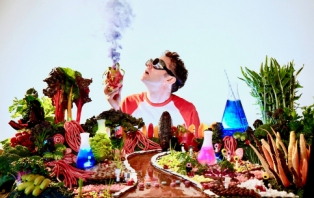
The Cheltenham Science Festival @ Home runs from 2-7 June and you can watch it all online!
Have you read about AIDA, the world’s first AI festival curator, in Whizz Pop Bang: Playground Science? Here’s where you can watch the live talks:
https://www.youtube.com/user/cheltenhamfestivals
Find out about the entire programme, including links to events being held on other platforms, here:
https://www.cheltenhamfestivals.com/science-home/whats-on/grid
Read on for our highlights of the festival!

Whizz Pop Bang: Playground Science is available here for just £4.75!

“Stefan Gates‘ Wonka-esque, snack-based science show is packed with the chemistry of sweets, the engineering of chocolate fountains, the biology of flatulence and the quantum mechanics of glowing spaghetti. Loads of demos you can try at home, plus a few you really can’t!”
“Why is grass green? And why do butterfly wings shimmer different colours? Join mathematician Katie Steckles, chemist Jamie Gallagher and biophysicist Nate Adams as they explore what colour means to them and how colours can even help us understand the universe.”
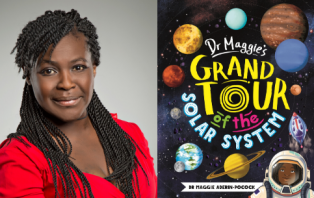
“Join space scientist Maggie Aderin-Pocock on an epic adventure through the Solar System. Visit the most magnificent sights and discover all the spectacles that outer space has to offer, from planets and moons to asteroids, comets and satellites. Hold on to your helmet and get set for a cosmic roller coaster ride.”
“Join Nate Adams for an extravaganza of fiery, colourful and explosive science demonstrations. Featuring original electropop with incredible visuals from the Sound of Science band. Explore what the universe is made of, why you stick to the ground and how you can eat light!”
“Many beautiful designs and patterns are based on underlying mathematical principles of shape and symmetry. Using a ruler and compass, shapes can be constructed on paper which can form the basis of geometric patterns. In this workshop mathematician Katie Steckles and illustrator Hana Ayoob will talk you through the process and give you time – and inspiration – to design your own artwork, incorporating design ideas from traditional mandala shapes and patterns.”
By Helly Douglas
September is almost here which can only mean one thing: it’s back to school time! But preparing for the new term is a little more complicated in 2020. As well as shelling out on school shoes and packing pencil cases, there’s also the impact of the ongoing COVID-19 pandemic to consider.
The latest government advice states that “all pupils, in all year groups, will return to school full-time from the beginning of the autumn term”, so many of us are wondering how to prepare our children for going back to school during a worldwide pandemic.
It’s natural for us all, parents and children, to feel a range of emotions about the start of a new term during this unusual time. We might be excited about our children seeing their friends and returning to learning in the classroom, but also worried about health risks and changes to normal school life.
We asked childhood mental health expert Dr Naira Wilson for her advice on how to help your child feel ready to walk back through the school gates.
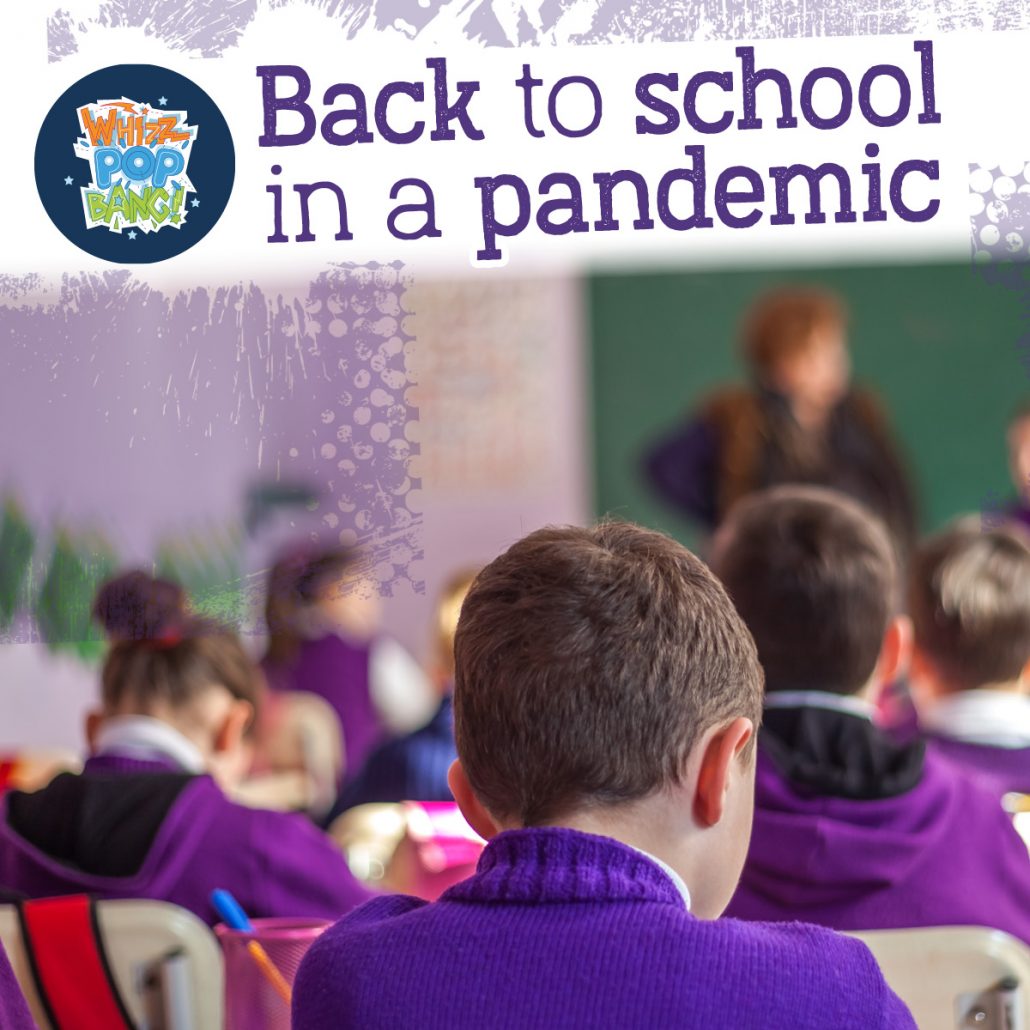
There’s a fine balance between preparing your child and depressing them with all the things they can’t do. Talk calmly and factually about what it will be like when they return. Changes are different, not bad.
Naira suggests you can help your child be curious about the changes. “Let them wonder what things will be like rather than thinking it will be good or bad.” They can tell you whether their predictions came true after their first day.
Read school communications together and note important information. It’s okay to feel in the dark or not remember all the changes. This shows them that everyone is learning a new way of schooling – even the teachers.
Whilst there will be plenty of changes, many things continue as usual. They will still complete activities and games, see their friends and be taught by a teacher. Reminding your child of the normal features of school will reassure them they are returning to a familiar place.
Naira recommends talking about how long it took for lockdown to feel familiar. “We all went through a process of adjusting to the change,” she explains. “Our bodies slowly get used to something new until we feel comfortable again. Going back to school is another change we will get used to.”
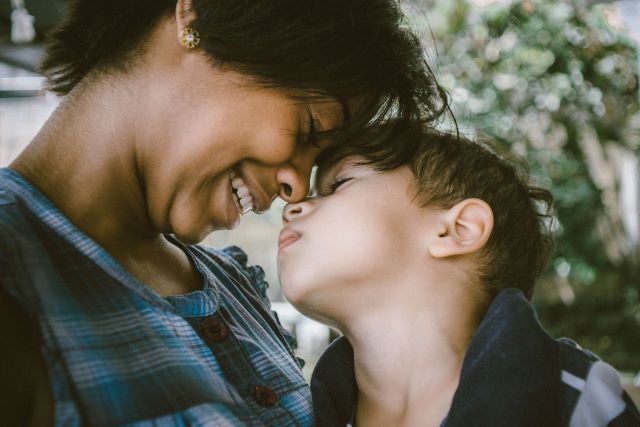
Children don’t share feelings on demand. Look for opportunities to talk when they feel comfortable. This could be over a meal, at bedtime, cuddled up watching TV or when out walking. Listen to their worries, even if they seem insignificant. Minor things, like which toilets to use, can feel huge to them.
Guessing and wondering how they’re feeling are great ways to begin a conversation. Sometimes children can’t articulate their emotions. Be confident with your guesses. If you’re right, they will feel you understand them. If you’re wrong, they’ll want to explain why. It shows them that parents can misunderstand sometimes – and help you find out what the real problem is.
If children know why it’s important to socially distance and wash their hands, it’s easier to get them to do it. Talk factually about COVID-19, without focusing on the risks – we’ve got more great tips from Naira on how to tackle conversations around coronavirus here. If you don’t know the answer to a question, suggest you can find out together.
Whilst you’ll want to show that you’re positive about their return, you don’t need to pretend everything is normal. Naira says, “Parents need to be honest. They can say, ‘I’m worried too because I don’t know what’s going to happen.’ It’s normal to feel worried sometimes.”
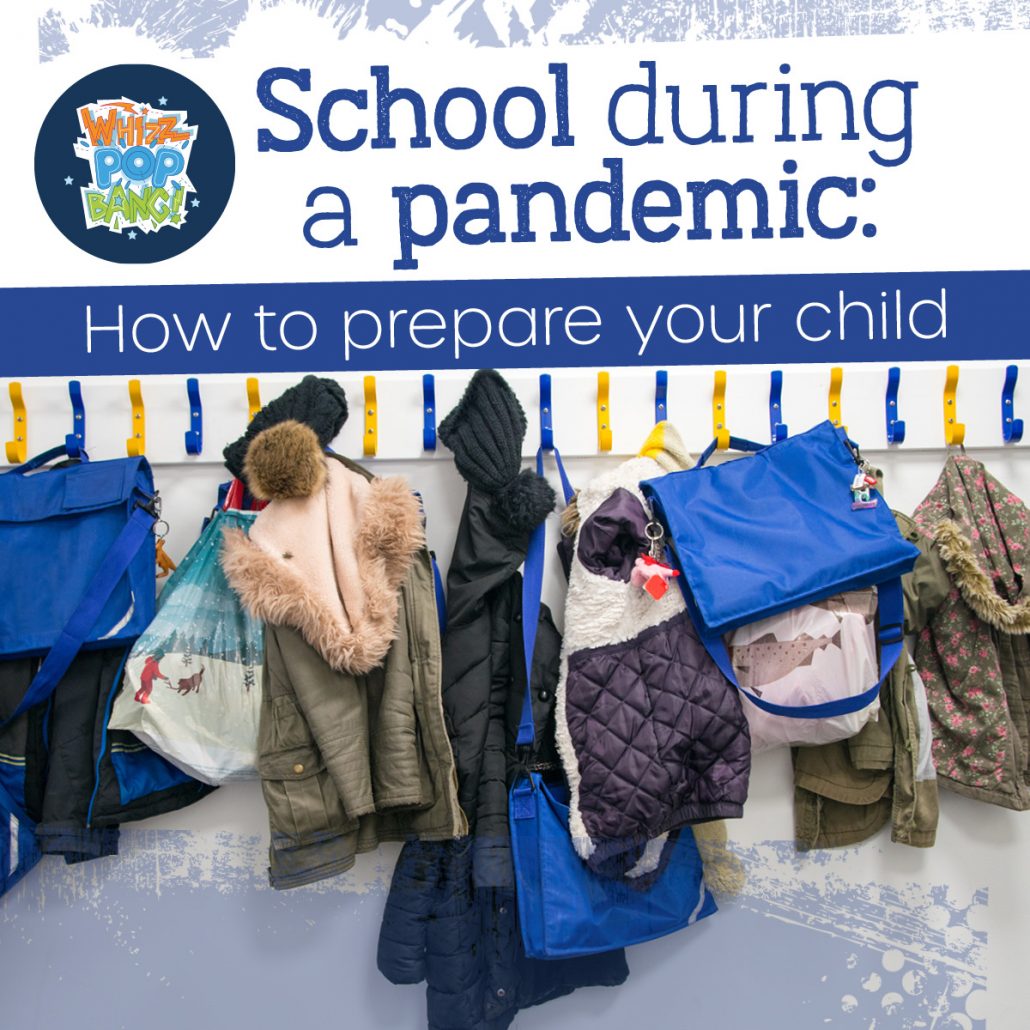
Children enjoy helping to get things ready. Check your school’s latest guidance and make a list for them to tick off. Let them pack their bag (with your help) so they know where everything is when they’re at school.
Naira suggests looking for ways to give them a sense of more control over the situation. Could they make a ‘how to’ help sheet for students who will return after them? Encourage them to see themselves as leading the way for other children.
Are you feeling anxious? Children are quick to pick up on our emotions. At school drop off, smile and be positive. Help them have a great start to their first day back.
“This isn’t a whole new approach to parenting,” Naira explains. “We are always preparing our children for change. Be confidently uncertain about not knowing all the details.”
Once your child has returned to school, you’ll be surprised how quickly they adapt. The strange changes will seem normal before long. However, if your child feels anxious about returning to school, discuss any issues with their teachers and see if they can help. If your child’s feelings don’t subside, or if they get worse, contact your GP to discuss your worries.
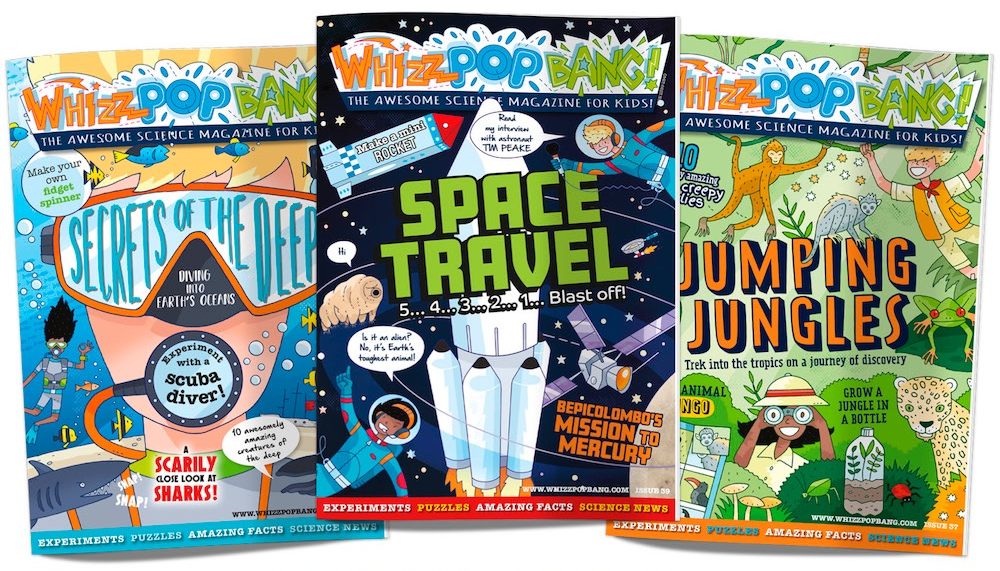
Whizz Pop Bang is a top-quality, gender-neutral, advert-free science magazine for families everywhere. Each issue is packed with experiments, activities, amazing facts, puzzles, jokes, riddles and more. Find out more here!
Dr Naira Wilson is a Chartered Clinical Psychologist who specialises in childhood mental health.
It goes without saying that we are immensely grateful for the incredible efforts of medics and everyone who works for the NHS, and we want to extend our thanks to include all SCIENCE HEROES who are working especially hard at the moment.
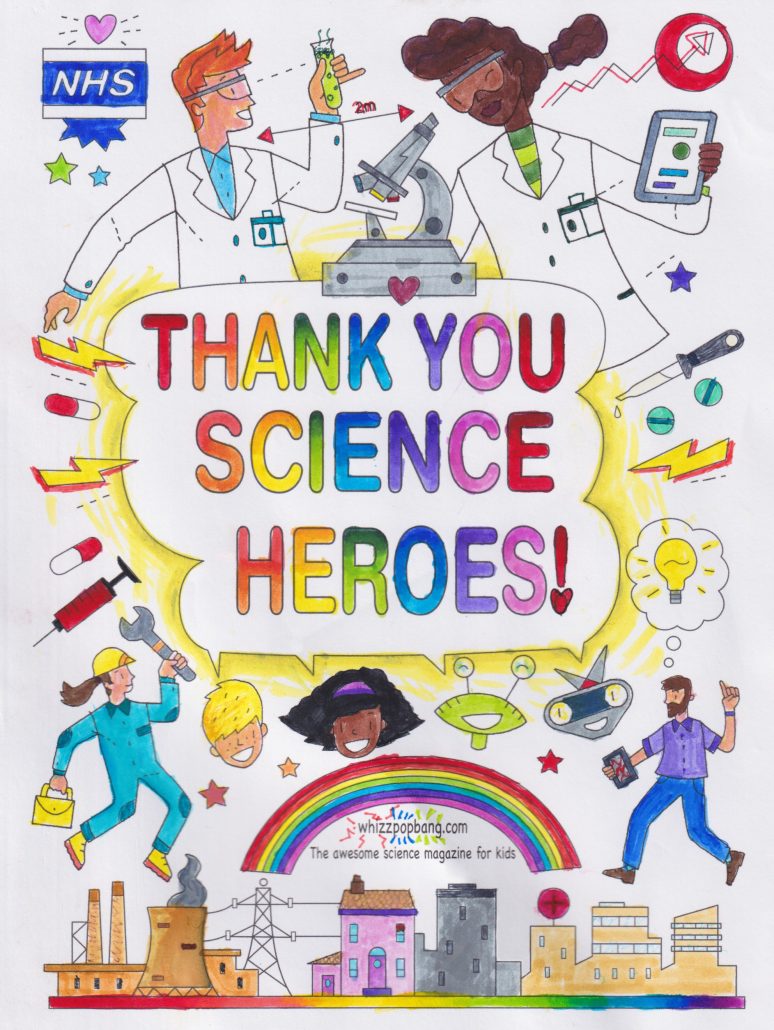
From clinical research scientists working on vaccines and cures, to engineers keeping our infrastructure up and running, to behaviour analysts working on how to ease lockdown, thousands of SCIENCE HEROES are using their amazing skills to keep the country running during the pandemic.
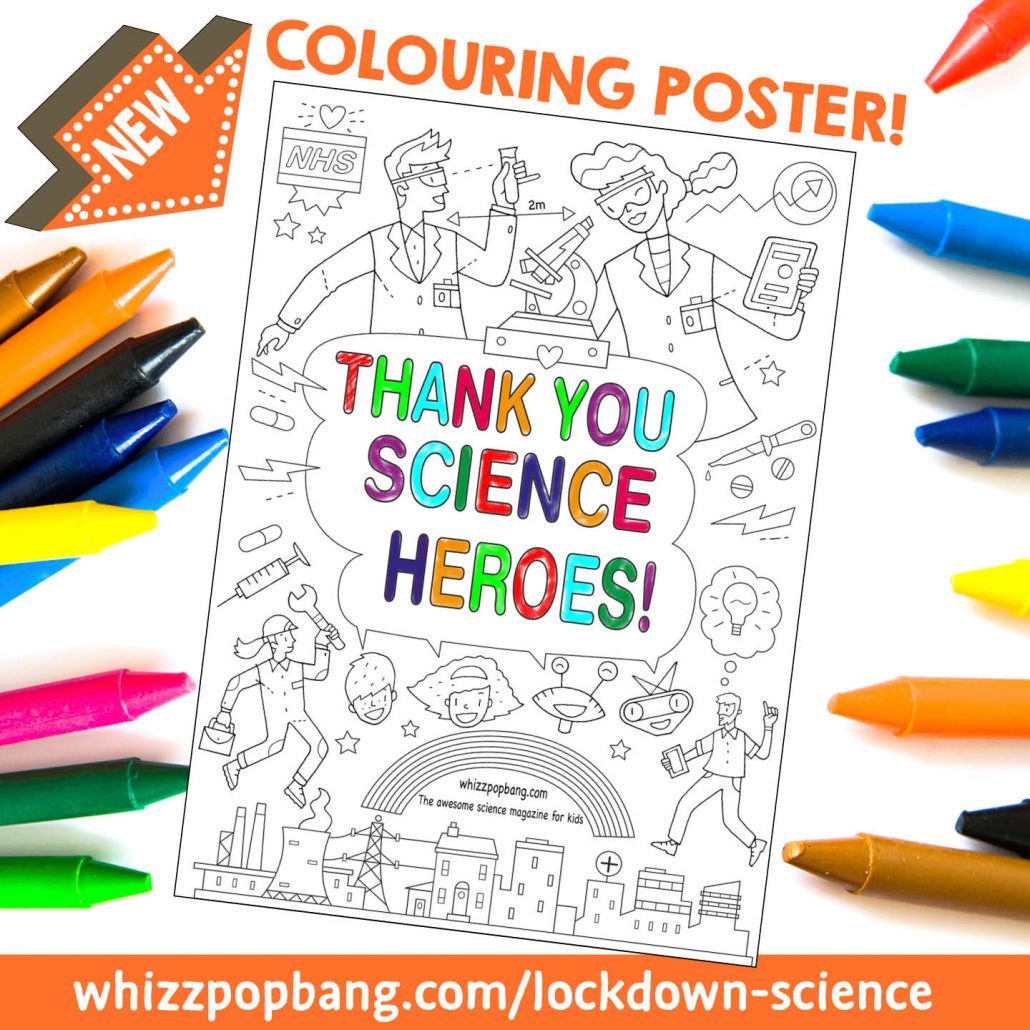
We want to show them how grateful we are, so here’s an awesome poster by Whizz Pop Bang’s brilliant illustrator Clive Goodyer to print, colour and display! Find it here: www.whizzpopbang.com/lockdown-science – scroll down the page to find it in a few different sizes.
Are you a scientist key worker? We would LOVE to know what important work our readers’ families are involved in during the COVID-19 crisis! 👇
Learn, make and innovate with this fantastic new collection of creative ideas. We’ve got ten copies to give away to Whizz Pop Bang fans!
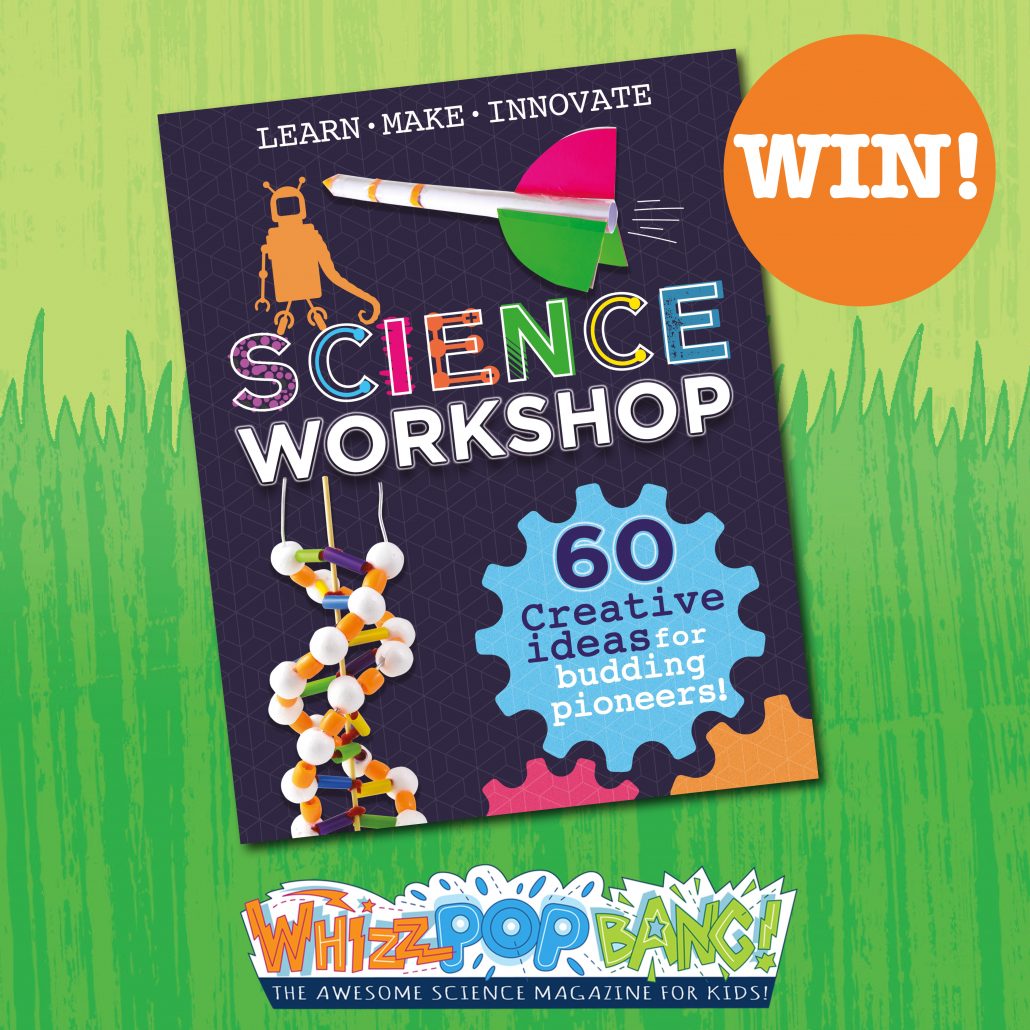
Budding pioneers will be inspired by this collection of projects based on the ideas of some great scientists, artists and engineers. Make a neon sign influenced by artist Tracy Emin, construct a stunt ramp to explore forces like Galileo Galilei, and lots more.
Just answer this question in the comments to be in with a chance of winning:
What are Io, Ganymede, Europa and Callisto?
a. The Galilean moons of Jupiter
b. Types of wild grass
c. Works of art by Tracy Emin
If you can’t see the ‘Leave a reply’ box below, click here to see the full version of this blog post.
This competition closes at midnight on Sunday 31st May 2020. Whizz Pop Bang competition terms and conditions are here.
With thanks to Hachette Children’s Group. Find out more about them on Facebook, Instagram and Twitter.
Transform your loo roll tubes into engineering masterpieces to be in with a chance of winning 12 Whizz Pop Bang magazines and a binder!
We love an engineering challenge here at Whizz Pop Bang HQ, so we’re challenging you all to get creative with toilet rolls! Show the world your engineering prowess by posting a photo of your structure with the hashtag #whizzpopbangloorollengineering – you could construct bridges, model buildings, miniature playgrounds, anything goes!
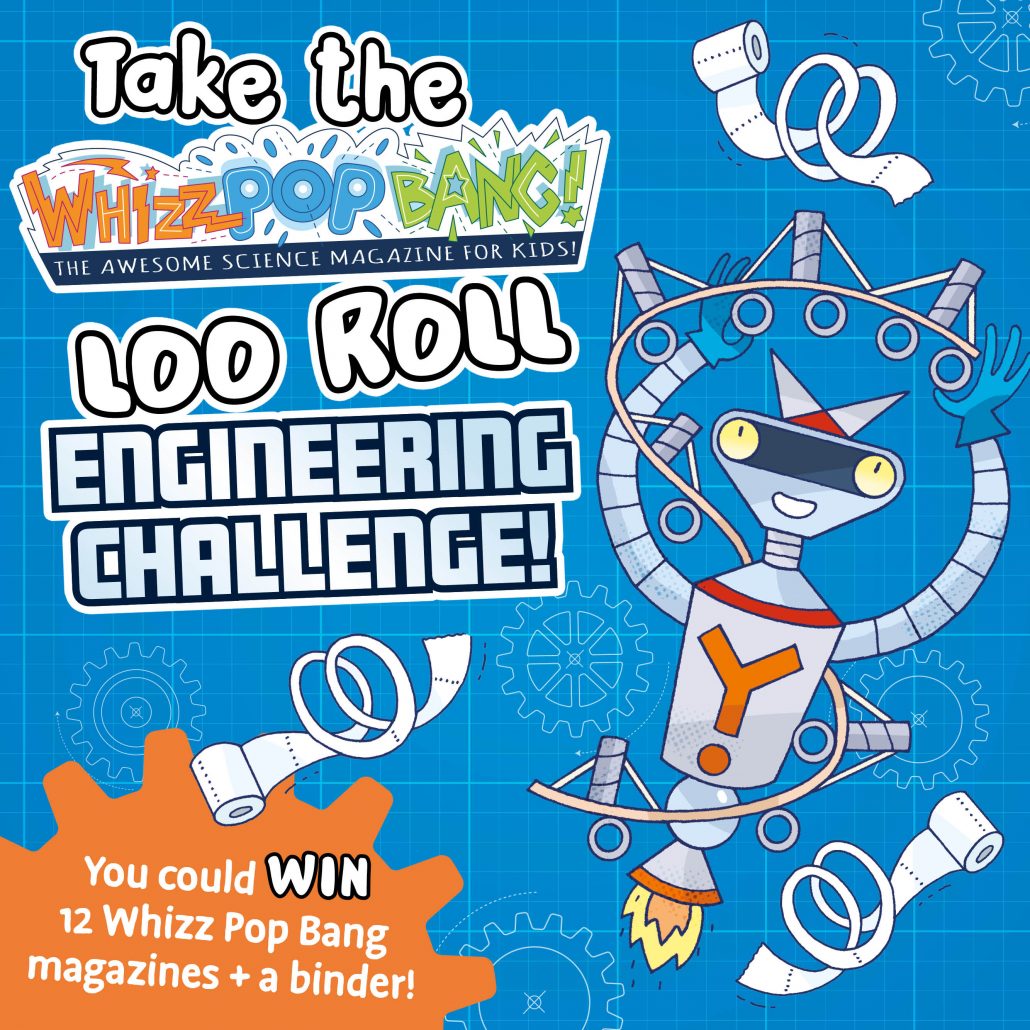
To take part, simply build a structure using as many toilet roll tubes (and tubes made from paper and card) as you like, photograph it and post it on social media with the tag #whizzpopbangloorollengineering. Alternatively, email it to y@whizzpopbang.com with the subject ‘loo roll engineering’.
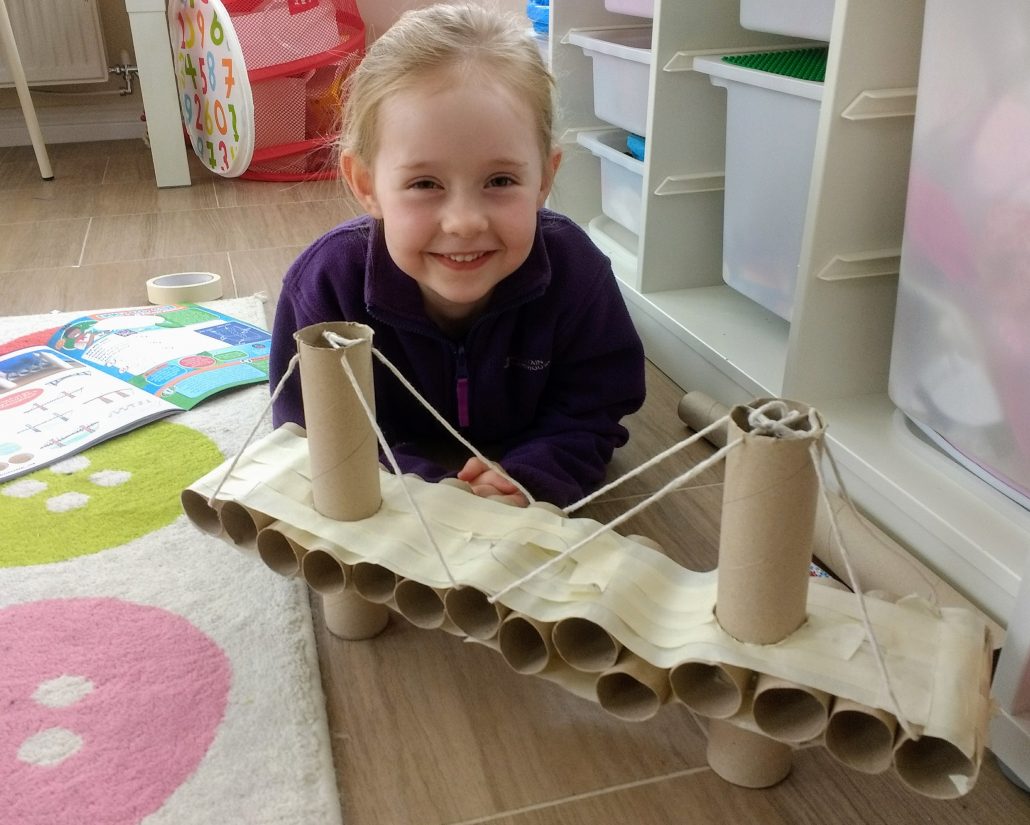
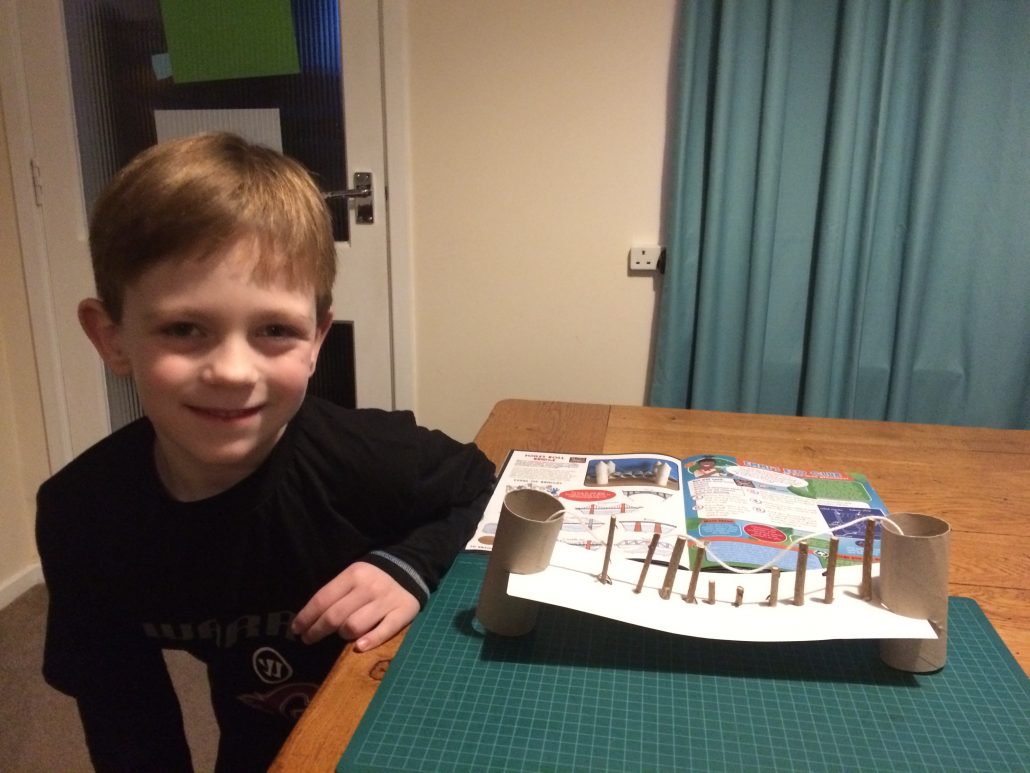
The five most creative constructions, (as judged by the Whizz Pop Bang science magazine team and their kids!) will each receive a binder full of 12 copies of Whizz Pop Bang, the award-winning science magazine for kids.
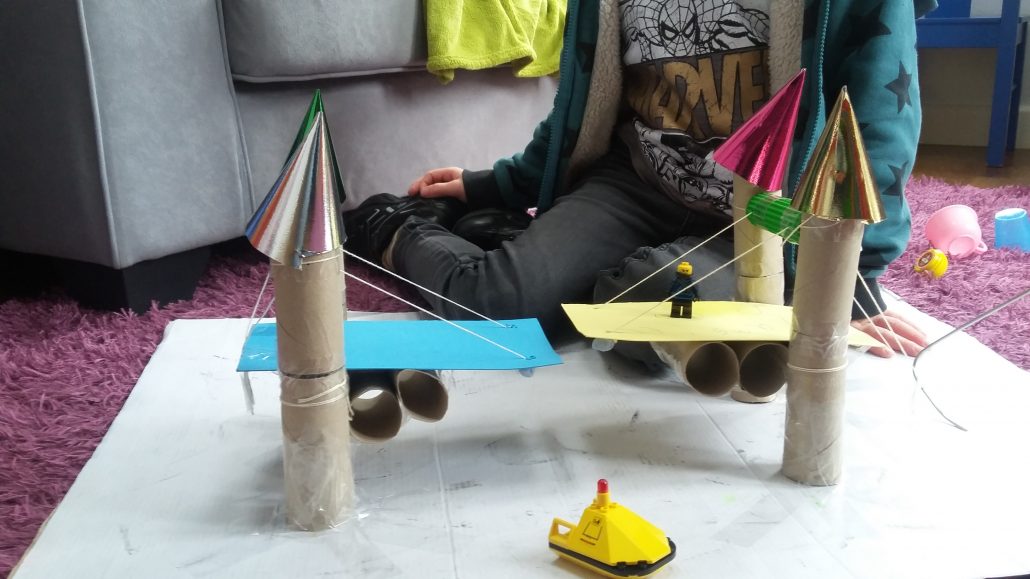
The competition is open to all ages and whole families are encouraged to build together. Teachers, spread the word to your pupils and set them the Whizz Pop Bang loo roll engineering challenge!
The competition is open until 31st May, which should give you some time to build up your loo roll collections!
The judges’ decision is final. Full terms and conditions of all Whizz Pop Bang competitions can be found here.
As a team made up almost exclusively of parents of primary-aged children, we are very used to working flexibly and juggling home working with childcare, so we’re lucky that we’ve been able to easily ramp this up a notch or three now that our kids are at home full time. Of course, it hasn’t all been plain sailing, with our editor Tammy having a particularly tough baptism of fire when a ceiling collapsed during her first morning of home schooling! You can read more about that in our blog post on home schooling tips.
Our printers and mailing house are practising social distancing in the workplace and working in shifts to minimise contact between employees. Each month, Whizz Pop Bang magazines are packed into envelopes by machine, ready for delivery by Royal Mail, and this will continue as long as it’s safe to do so.
Orders of back issues, books and lab coats from our online shop are sent out by Royal Mail directly from our own warehouse, where we now have only a single person, Sophie or Hennie, working at any one time. With the warehouse shutter doors flung open to the Cotswold sunshine, and the radio blaring, it’s not quite as desolate as it sounds! The government is encouraging home delivery services to continue as normal where possible to keep the country running. Please be mindful that there may be delays in the postal service due to staff shortages, but the Royal Mail are committed to ensuring that households still receive mail.
Find out more about the impressive precautions that Royal Mail are taking to ensure that your post reaches you as safely as possible here.
As a small, independent business, we feel we’re doing an important job in helping families educate and entertain their children at home. If the situation changes and for any reason we’re not able to send out physical magazines, we’ll make sure that we provide all subscribers with access to a digital version of Whizz Pop Bang instead.
If you have any questions, please email or phone us on 0330 2233 790. Though we may not always be able to respond straightaway, we’ll do our best to get back to you as quickly as we can.
We’d love to hear what our readers are up to at home – please share your photos, experiments, ideas and indeed all your adventures in science with us! Simply email Y@whizzpopbang.com and we’ll publish a selection in the magazine and online. Don’t forget, we’ve shared loads of FREE science activities and experiments for you all to enjoy right here!
Happy home experimenting!
Calling future geologists and palaeontologists! You could get stuck into a hands-on adventure with this National Geographic Gemstone Dig Kit.
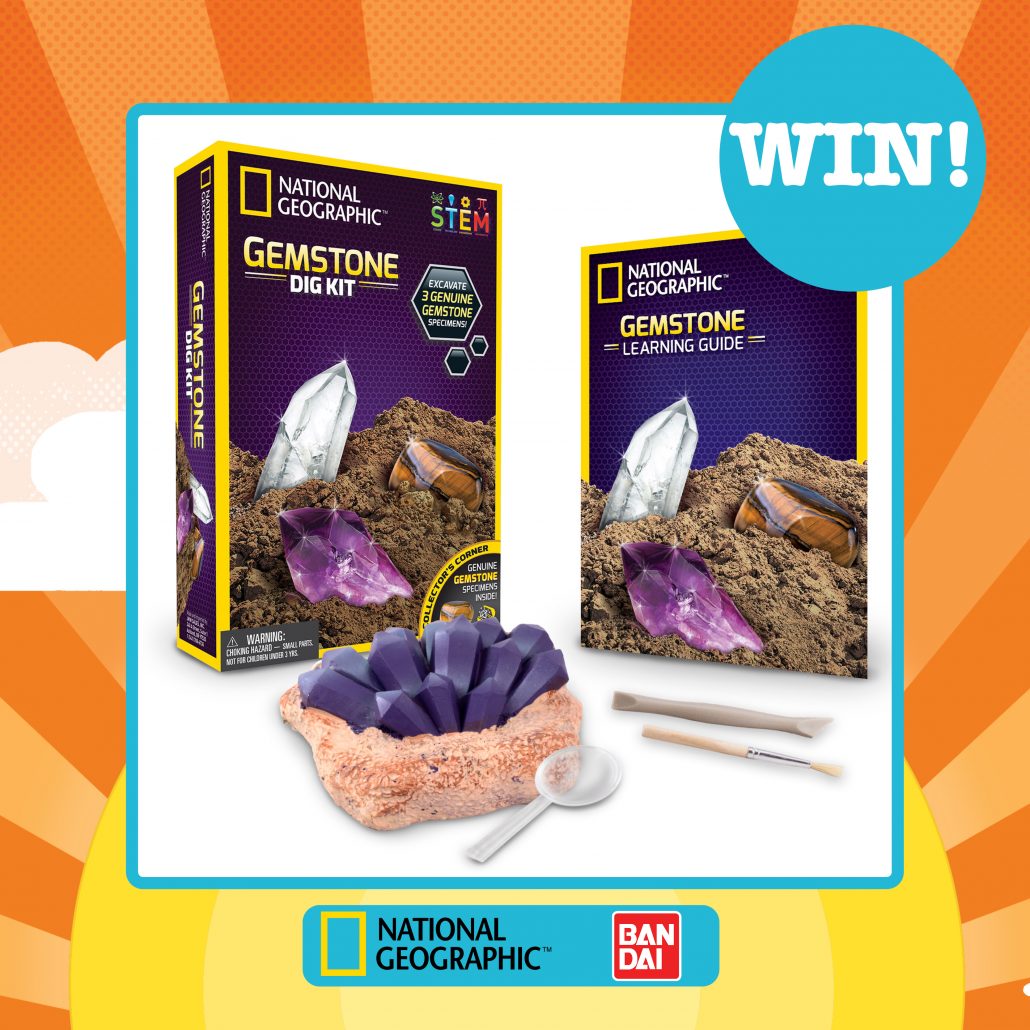
Your child will become a treasure hunter as they carefully uncover spectacular genuine gemstones using the digging tools provided. National Geographic’s full-colour learning guide makes identifying each specimen easy. The guide is also packed full of information and amazing facts about their crystals!
We’ve got five sets to give away! Just answer this question in the comments to be in with a chance of winning:
Which of the below is a type of gemstone?
a. Amethyst
b. Ammonite
c. Amoeba
If you can’t see the ‘Leave a reply’ box below, click here to see the full version of this blog post.
This competition closes at midnight on Thursday 30th April 2020. Whizz Pop Bang competition terms and conditions are here.
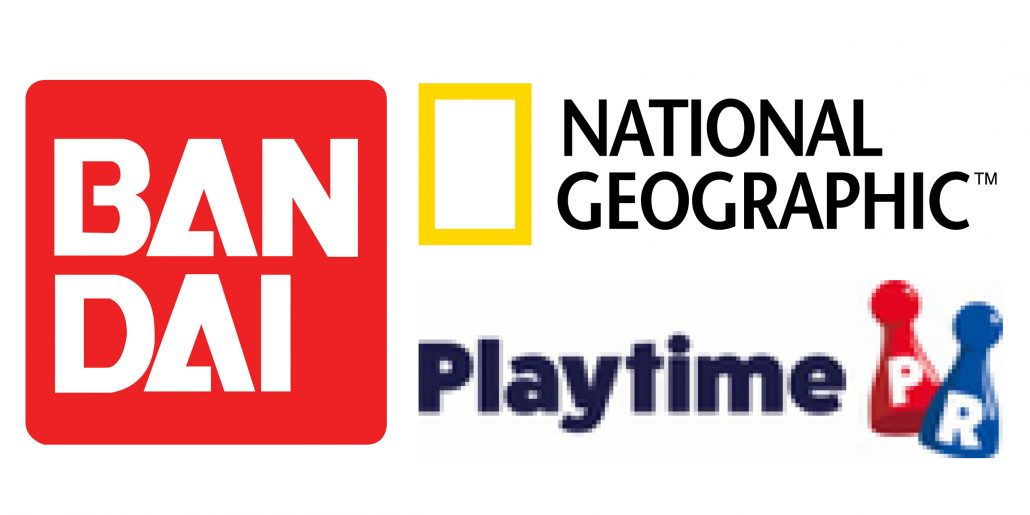
Now that schools are closed, have you become a home educator overnight? Whizz Pop Bang is the world’s most awesomely amazing kids’ science magazine, bursting with hands-on experiments, facts and fun, and we want to help you and your children with the huge transition that many of us face.
Here are some FREE science activities and experiments to help you entertain, excite and educate your year 5 child! You’ll find out how to make a water wheel lifter, a balloon rocket, a model of our solar system, flying machines and paper planes, plus reading comprehensions about astronaut Tim Peake and sensational scientists The Wright Brothers!
Our experiments are designed for children from 6 to 12, but this list of experiments is particularly perfect for year 5, P6 (Scotland) and 9-year-olds and 10-year-olds as they tie in with the relevant National Curriculum objectives and topics.
The reading comprehensions included here were designed to be read at A3 size, so text may appear too small when printed at A4. They work really well on a tablet or monitor, or you may need to print them on two pages of A4 if your printer allows.
If you have any comments or questions about our free year 5 science experiments and reading comprehensions, please leave a comment for us. Or do you have any science homeschool ideas or general home educating ideas for 9- and 10-year-olds? We’d love to hear from you!
Harness the power of water in this fun free science experiment using household items.
This activity is taken from Whizz Pop Bang’s Awesomely Amazing Science Club – download the entire pack here!
You will need:
1 small plastic bottle
1 large yoghurt pot or plastic bottle cut in half
Duct tape
String
Paper clip
Bowl
Wooden spoon or pencil
Make a balloon fly across the room!
You will need:
A balloon
String
Two chairs
Measuring tape
A 5 cm piece of straw
Topic links: Year 5 Forces and magnets, P6 Forces
This interview delves into what it is really like to travel in space. Tim Peake describes what it feels like to take off in a rocket and to feel weightless, as well as his scariest moments. A must-read for your aspiring astronauts.
This downloadable reading pack includes:
– An interview with Tim Peake for you to print or for your child to read on a tablet.
– Reading comprehension question sheet and answer sheet.
Topic links: Year 5 Earth and Space, P6 Space
Print and fold a paper stunt plane that should fly in a circle!
You will need:
Sticky tack
Year 5 Forces and magnets, P6 Forces
Experiment with making flying machines by adding different shapes to paper straws!
You will need:
Paper straws
Year 5 Forces and magnets, P6 Forces
A biography text on the remarkable story of the team behind the world’s first powered flight. In December 1903 Wilbur piloted a plane with a petrol engine for 59 seconds and travelled 260 metres. The Wright brothers had unlocked the secret of mechanical flight!
This downloadable reading pack includes:
– A feature about sensational scientists, The Wright Brothers, for you to print or for your child to read on a tablet.
– Reading comprehension question sheet and answer sheet.
Topic links: Year 5 Forces and magnets, P6 Forces
Learn the order of the planets by making a model solar system. Just download, print, add scissors and glue, and your astronauts-in-training will do the rest. It’s out of this world!
Topic links: Year 5 Earth and space, P6 Space
Are you home educating children in other year groups? Find more free resources here:
Free science activities for year 2 and P3
Free science activities for year 3 and P4
Free science activities for year 4 and P5
Free science activities for year 6 and P7